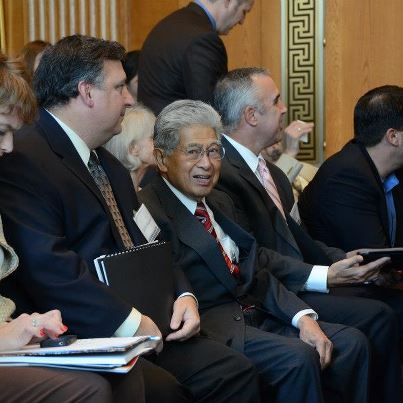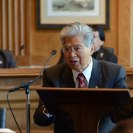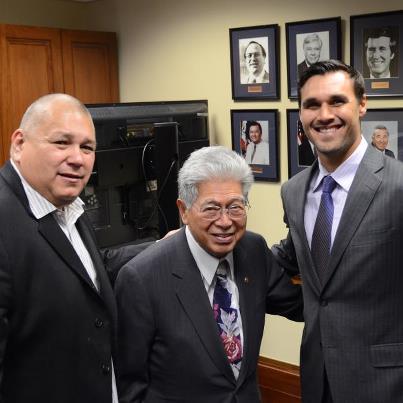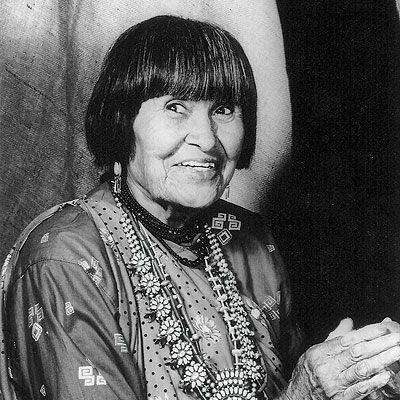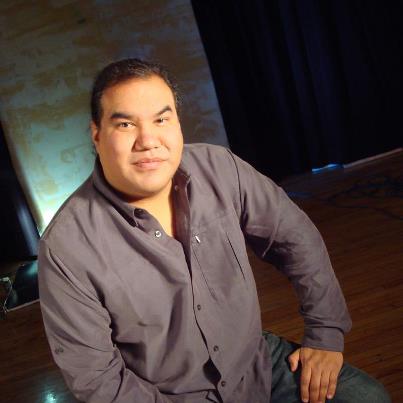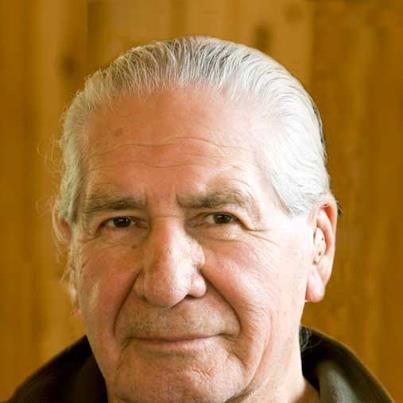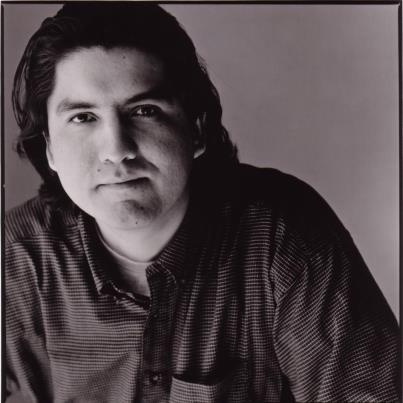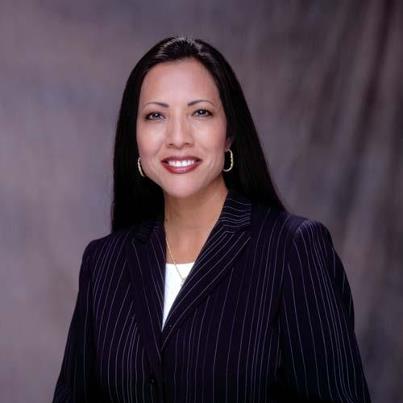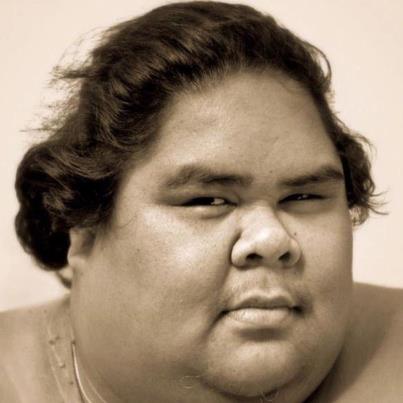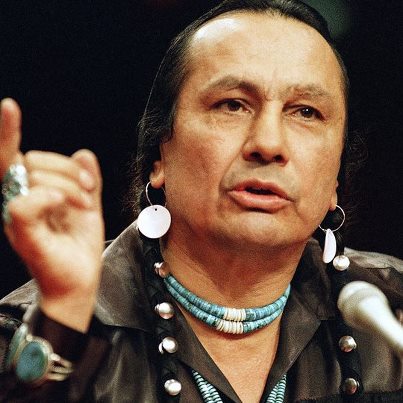12/4/12
United States Senate Committee on Indian AffairsCommunity Page about United States Senate Committee on Indian Affairs
- Chairman Akaka met today with Asst. Secretary of Indian Affairs Kevin Washburn and Deputy ASIA Larry Roberts regarding the final priorities of the Committee in the 112th Congress.
- RecommendationsSee All
 Ryan Joneshttp://www.pokernews.com/news/2012/08/south-point-receives-historic-online-poker-license-in-nevada-13284.htm in your faceabout 3 months ago
Ryan Joneshttp://www.pokernews.com/news/2012/08/south-point-receives-historic-online-poker-license-in-nevada-13284.htm in your faceabout 3 months ago Peggy Williams AllenICWA = reverse assimilation at its finest. By applying the law to children with miniscule amounts of NA ancestry because an ancestor is on the Dawes Roll is heinous!14 · about 4 months ago
Peggy Williams AllenICWA = reverse assimilation at its finest. By applying the law to children with miniscule amounts of NA ancestry because an ancestor is on the Dawes Roll is heinous!14 · about 4 months ago Michael ADPlease support sensible legislation to officially legalize and regulate online poker. I support HR 2366, the Online Poker Act, and would like to see a Senate version of the bill introduced and passed. As a poker player, I fully aspire to have the right to play poker from the comfort and convenience of my own home. There is no reason to believe that this would harm Tribal casinos as the establishments would presumably be able to partake in online poker as well. Moreover, online poker encourages players to come to brick and mortar casinos when they have enough time and experience. I live a few hours from an American Indian casino and would most definitely be playing there more often if I had more experience playing online for real money. Thank you for your time.about 4 months ago
Michael ADPlease support sensible legislation to officially legalize and regulate online poker. I support HR 2366, the Online Poker Act, and would like to see a Senate version of the bill introduced and passed. As a poker player, I fully aspire to have the right to play poker from the comfort and convenience of my own home. There is no reason to believe that this would harm Tribal casinos as the establishments would presumably be able to partake in online poker as well. Moreover, online poker encourages players to come to brick and mortar casinos when they have enough time and experience. I live a few hours from an American Indian casino and would most definitely be playing there more often if I had more experience playing online for real money. Thank you for your time.about 4 months ago
- During the month of November, the United State Senate Committee on Indian Affairs honored Native Americans, Alaska Natives, and Native Hawaiians who have excelled in their respective fields. These individuals have demonstrated an exemplary...commitment to excellence and have shown us all that it is possible to succeed despite seemingly insurmountable odds.See More
Today, we would like to recognize our honorees one more time. Thank you to: the Chairmen of the Senate Committee on Indian Affairs, Billy Frank, Jr., Charlie Hill, Kateri Tekakwitha, Edward K. Thomas, Duke Kahanamoku, Richard Milanovich, Suzan Shown Harjo, Hattie Kauffman, the Black Lodge Singers, Sam Bradford, Lori Ann Piestewa, Bruce “Two Dogs” Bozsum, Shoni and Jude Schimmel, Mary Golda Ross, Russell Means, Jana Mashonee, Israel “IZ” Kamakawiwoʻole, Mary Kim Titla, Sherman Joseph Alexie, Jr., Earl Barbry, Irene Bedard, Oren R. Lyons, Kyle Lohse, Chris Eyre, Maria Martinez, N. Scott Momaday, the Iroquois Nationals, the Native American Ballerinas, and Floyd Red Crow Westerman. You have inspired all of us. - ActivityRecentUnited States Senate Committee on Indian Affairs added a photo from September 8,...
- In closing, we honor the late Floyd Red Crow Westerman, a musician, actor, and political advocate. Mr. Westerman was born in 1936 on the Lake Traverse Reservation and is a member of the Sisseton Wahpeton Oyate Tribe of South Dakota. Mr. We...sterman began his career as a successful country music artist. He has collaborated with artists including: Willie Nelson, Bonnie Raitt, Joni Mitchell, and Buffy Sainte-Marie. In 1989 Mr. Westerman decided to pursue acting. He is perhaps best known for his portrayal of the Sioux leader Ten Bears in Dances with Wolves. Throughout his acting career, Mr. Westerman appeared in over 50 movies and television shows, including Hidalgo, Swing Vote, and Walker Texas Ranger. He dedicated much of his life to advocate for American Indian rights and environmental causes. His advocacy work includes the American Indian Movement (AIM), touring with Sting to publicize the decimation of rain forests and their residents, and serving as founder and executive director of the Eyapaha Institute, a non-profit corporation devoted to address racism, discrimination, depredation and genocide of indigenous peoples throughout the world. His many accolades include a Congressional Certificate of Special Recognition, Award for Generosity by the Americans for Indian Opportunity and Celebrity of the Year by the American Indian Exposition in 2000. He passed away on December 13, 2007.See More
- Passing a legislative Carcieri fix has a $0 price tag. But not fixing Carcieri costs 100,000 jobs, freezes access to capital and threatens public safety.
- Our hearing on "Reclaiming Our Image and Identity for the Next Seven Generations," will start in 20 minutes.
- Today we honor Maria and Marjorie Tallchief, Moscelyne Larkin, Yvonne Chouteau and Rosella Hightower, Native American Ballerinas who took the ballet world by storm as they replaced traditional European dancers and dominated the Ballet Russe...de Monte Carlo and Grand Ballet de Marquis de Cuevas stages in the 1940s.See More
Maria Tallchief, Osage, was the first Native American to become a prima ballerina and danced with the Ballet Russe de Monte Carlo from 1942 to 1947. She helped create the New York City Ballet and helped found the Chicago Ballet in 1981.
Marjorie Tallchief, Osage, was the first American Indian to be "première danseuse étoile" of the Paris Opera Ballet and performed with the Grand Ballet du Marquis de Cuevas. She has performed for many notable public figures including President Kennedy, Charles de Gaulle, and President Lyndon B. Johnson. Ms. Tallchief became the Artistic Director of the Dallas Ballet.
Moscelyne Larkin, Shawnee-Peoria, joined the Wassily de Basil’s Original Ballet Russe at the age of fifteen before joining the Ballet Russe de Monte Carlo. In the 1950s she founded the Tulsa Civic Ballet and School. In 1978 she was inducted into the Oklahoma Hall of Fame.
Yvonne Chouteau, Shawnee-Cherokee, joined the Ballet Russe de Monte Carlo at the age of fourteen and was the youngest dancer ever accepted. She was inducted into the Oklahoma Hall of Fame in 1947 at the age of eighteen, the youngest member ever inducted. In 1960 she helped develop the University of Oklahoma’s dance program, which was the first fully accredited dance program in the United States.
Rosella Hightower, Choctaw, danced for the Ballet Russe de Monte Carlo, before joining the American Ballet Theatre in New York City. Ms. Hightower opened the Centre de Danse Classique in 1962 in Cannes, which became one of Europe’s most prestigious ballet schools.
To learn more about the ballerinas:
http://bcove.me/s0vu3vvs - Today we honor the Iroquois Nationals, the first Native American lacrosse team to compete internationally in a professional sport. The team was created in 1983 and is represented by the six Nations of the Iroquois (Oneida, Mohawk, Onondaga,...Seneca, Tuscarora and Cayuga). The Iroquois people are known for creating the sport of lacrosse itself and it is central to their social, spiritual and cultural heritage. In 1990 the Iroquois Nationals were admitted to the International Lacrosse Federation and have been competing in the World Indoor Lacrosse Championship since it first began in 2003. The games, held every four years, have given the team the opportunity to travel around the world to compete against nations including Australia and Canada. They have competed in all three of the games medaling in each. Most recently they took silver in the 2011 Prague games. They have also qualified to play in the World Lacrosse Championship since 1998, taking fourth each time. In 2012 they traveled to Finland for the World Championship and came in third, despite beating England and the USA. In 2006 the Iroquois Nationals partnered with Nike who is sponsoring programs to promote wellness-and-fitness activities in Native American communities throughout the region, as well as provide lacrosse equipment and sportswear for the team. The Iroquois Nationals program has had a significant impact on Native youth throughout the country as their triumphs have provided an international showcase of indigenous talent and culture.See More
To view the Iroquois Nationals defeat team USA in the 2012 World Lacrosse Championship:
http://www.youtube.com/watch?v=oWBBJqZUyy8 - Join the Indian Affairs Committee tomorrow for a meet and greet with Chris Wondolowski at 2 pm in room 628 of the Dirksen Senate Office Building. Chris plays for the San Jose Earthquakes and is a finalist for the 2012 MLS Most Valuable Player award, which will be announced on November 29, 2012. Mr. Wondolowski is Kiowa.
- Today we honor N. Scott Momaday a Pulitzer Prize winning author whose unique approach to writing about contemporary Indian life sparked the Native American Renaissance literary movement. He was born Navarre Scott Momaday in 1934 to a Kiowa ...father and Cherokee mother in Lawton, Oklahoma. Mr. Momaday’s first novel House Made of Dawn was published in 1969 and earned the Pulitzer Prize for Fiction. The book is based on his experiences while living at the Jemez Pueblo and is considered a classic in Native American literature. He has written more than fifteen books and his recent titles include The Ancient Child, In the Presence of the Sun, and The Native Americans: Indian Country. He is featured as a commentator on a documentary about the American old west tilted “The West,” which was produced by Ken Burns, and is featured on the PBS documentary The American Experience: Last Stand at Little Bighorn discussing boarding schools and the Battle of Little Bighorn. He is the founder of Rainy Mountain Foundation and Buffalo Trust, a non-profit organization that works to preserve Native cultures. In 1992 he became the first recipient of the Lifetime Achievement Award from the Native Writers’ Circle of America and he was awarded the National Medal of Arts by President George W. Bush in 2007. He is currently a professor of English at the University of Arizona.See More
To listen to Mr. Momaday give a reading at the National Museum of the American Indian’s 2008 Native Writers Series: http://www.youtube.com/watch?v=ypr3x8uBFgA - Today we honor Maria Martinez, a traditional cultural artist who reintroduced pottery making to the Pueblo people, and turned the craft of Native American pottery into an internationally appreciated art form. Ms. Martinez was born in 1887 a...nd was from the San Ildefonso Pueblo, a community just outside of Santa Fe. At an early age, she learned pottery skills from her aunt. Traditional pottery making techniques were being lost, but Martinez and her family experimented with different techniques and helped preserve the cultural art. In 1908 an excavation in New Mexico led to the discovery of Pueblo pottery from the 1600s. Ms. Martinez was hired to re-create the once-lost style and she did so with great success. For years she perfected her craft and she created a style that would become world famous - pottery with a combination of a matte finish and a glossy jet-black surface. Ms. Martinez won many awards for her work and received a grant from the National Endowment for the Arts to fund a Martinez pottery workshop in 1973. She passed on her knowledge and skill to many others in her community providing them with a means of artistic expression and the ability to carry on a traditional part of the pueblo way of life. Ms. Martinez’s artwork and lessons helped revitalize her pueblo’s economy and today her pottery sells for as much as $20,000.See More
To learn more about Ms. Martinez:
http://www.youtube.com/watch?v=7AhX1MhvAG8 - Today we honor Chris Eyre, an award winning director and producer, and according to People Magazine, the “Preeminent Native American filmmaker of his time.” Mr. Eyre was born in 1968 and is a member of the Cheyenne and Arapaho Tribes of Okl...ahoma. He received his big break in 1998 with his directorial debut of Smoke Signals, the first feature-length film directed by a Native American to receive national theatrical release by a major distributor - Miramax Films. Smoke Signals became one the highest-grossing independent films of the year and it won the Audience award at the Sundance Film Festival. Mr. Eyre has continued to captivate audiences with his depictions of life for Native Americans. Mr. Eyre’s won a Directors Guild of American Award for Outstanding Directorial Achievement for his 2004 film Edge of America and in 2007 he was selected for two prestigious artist awards – the United States Artists Fellowship and the Bush Foundation Artists Fellowship in Film/Media for his work. Recently, he has directed A Thousand Roads for the Smithsonian’s National Museum of the American Indian, three episodes for the PBS miniseries We Shall Remain and select episodes of Friday Night Lights and Law & Order: Special Victims Unit. In February of 2012, Mr. Eyre was appointed chair of the Santa Fe University of Art and Design’s Moving Image Arts Department.See More
To view the Smoke Signals preview:
http://www.youtube.com/watch?v=z4GthKmraXQ - Today we honor Kyle Lohse, a Major League Baseball player and starting pitcher for the 2011 World Champions, the St. Louis Cardinals. Mr. Lohse was born in 1978 and is a member of the Sacramento-area-based Paskenta Band of Nomlaki Indian Tr...ibe. He was drafted into the Major Leagues in 1997 by the Chicago Cubs and was later traded to the Minnesota Twins. On June 22, 2001, at the age of 22, Mr. Lohse made his Major League debut pitching for the Twins. Mr. Lohse became a full time starting pitcher in 2002 and helped the Twins reach the American League Championship Series. In 2008 Mr. Lohse signed on to play for the St. Louis Cardinals and has been in the starting rotation ever since. On August 28, 2011, Lohse won his 100th game as a pitcher when the Cardinals defeated the Pittsburgh Pirates 7–4. He also led the team that year with 14 wins and a 3.39 earned running average (ERA). The St. Louis Cardinals then went on win the 2011 World Series. Mr. Lohse had the best winning percentage of any pitcher in the National League in 2012, with 143 strike outs and only 38 walks in 211 innings. Mr. Lohse’s contract expired with the Cardinals after his 2012 season and ESPN has listed Mr. Lohse as one of the top ten free agents in Major League Baseball. In 2008 Lohse was featured in an exhibit called “Baseball's League of Nations: A Tribute to Native Americans in Baseball,” at the Iroquois Indian Museum in New York.See More
To learn more about Mr. Lohse’s career highlights and statistics:
http://espn.go.com/mlb/player/_/id/4789/kyle-lohse - On this Native American Heritage Day we honor, Oren R. Lyons, Jr., a celebrated advocate of indigenous rights and member of the Seneca and Onondaga nations. Mr. Lyons, who was born in 1930, was drawn to activism early on in life and has wo...rked to foster the preservation of tribal values, to convince the Bureau of Indian Affairs to honor its treaties with Native American tribes, and to eradicate international racism toward indigenous peoples. In 1982, Mr. Lyons helped establish the Working Group on Indigenous Populations at the United Nations and in 1992, addressed the General Assembly at the opening of the International Year of the World’s Indigenous People conference. He serves on the Executive Committee of the Global Forum of Spiritual and Parliamentary Leaders on Human Survival. Mr. Lyons is a Faithkeeper for his tribe and his ability to keep the peace has made him a successful moderator and negotiator. In 1990 he was a negotiator between the governments of Canada, Quebec, New York State and the Mohawk Indians in the Oka crisis, and met the conflict with honor and success. Mr. Lyons serves on the board of the Harvard Project on American Indian Economic Development and is board Chairman of Honoring Contributions in the Governance of American Indian Nations. His many accolades include the Ellis Island Congressional Medal of Honor, the Earth Day International Award for the United Nations, and the Elder and Wiser Award from the Rosa Parks Institute for Human Rights.See More
To hear Mr. Lyons discuss the UN's Declaration of Rights for Indigenous Peoples:
http://www.youtube.com/watch?v=SOw6S_immM4 - Today is Native American Heritage Day. What are you doing in honor of today?
- Today we honor Irene Bedard, an Alaska Native actress who is best known for being the voice of Pocahontas in Disney’s 1995 animated classic. Ms. Bedard was born in 1967 and is Inupiat. Her Eskimo name is Goodiarook, which means “someone who...dropped.” Ms. Bedard got her big break in 1994 when she stared in “Lakota Woman: Siege at Wounded Knee,” a film about the 1970s standoff at Wounded Knee, South Dakota. Ms. Bedard has had an active career in Hollywood and she has starred in “Smoke Signals,” Disney’s “Squanto: A Warrior’s Tale,” “Tortilla Heaven,” “Wildflowers,” “Miracle at Sage Creek,” and “The New World.” In 2005, she was cast in Steven Spielberg’s television mini-series “Into the West,” portraying the half-Lakota, half-white adult Margaret “Light Shines” Wheeler. Currently, she has filmed three additional films that will be released next year. Irene Bedard is known for bringing a powerful emotional presence to her characters and was nominated for a Golden Globe for her work in “Lakota Woman.” She was chosen as one of People magazine's 50 Most Beautiful People in 1995 and the Disney Pocahontas character was actually modeled after her likeness. Ms. Bedard’s culture remains very important to her and she helped found Guardians of Sacred Lands, a group which educates the public about sacred sites and helps protect religious grounds.See More
To learn more about Ms. Bedard’s acting career:
http://www.imdb.com/name/nm0065942/ - The witness list for next Thursday’s hearing on "Reclaiming Our Image and Identity for the Next Seven Generations," is now official. Just a little teaser: a pro-soccer player, actress and a 20 year-journalism veteran will be testifying. For more info: http://www.indian.senate.gov/hearings/hearing.cfm?hearingID=a38bcc15c08831f5074ff31d1dac03c5
- Today we honor Earl Barbry, Chairman of the Tunica-Biloxi Tribe in Marksville, Louisiana and a visionary leader with an enduring legacy of stalwart leadership in the reestablishment of the federal recognition status of the Tribe in 1981. Ch...airman Barbry, who was born in 1950, was elected Chairman in 1978 and for the last 34 years he has guided the Tunica-Biloxi Tribe’s self-determination efforts to grow from a Tribe with little infrastructure and resources to one of the largest labor forces in central Louisiana. Chairman Barbry also works to promote national American Indian issues, and currently serves on the board of the United South and Eastern Tribes (USET). In this capacity, he testified in March before the Senate Committee on Indian Affairs on the President’s Fiscal Year 2012 Budget for Tribal Programs. Chairman Barbry also has a leadership role in the Louisiana Inter-Tribal Council, an organization that serves federal and state-recognized Indian communities. He has received numerous awards on the local and national levels, which are a testament to his work on behalf of his people as well as all Native Americans and the surrounding communities. In 1993, Barbry was named the recipient of the Avoyellean of the Year Award by the Avoyelles Journal, the highest award given in the parish. In 1996, the Marksville Chamber of Commerce named him Minority Businessman of the Year. He received the 2005 Leadership Award of the National Indian Gaming Association and in 2006 he was named a Louisiana Legend by Louisiana Public Broadcasting in recognition of his cultural, educational and economic contributions to the region and the state, becoming the first American Indian to receive this honor. He encourages all tribal members to remember their ancestors and heritage while they move forward in today’s world and his motto is“Cherishing our past, building for our future.”See More
To view Mr. Barbry’s testimony:
http://www.indian.senate.gov/hearings/loader.cfm?csModule=security%2Fgetfile&pageid=8316 - Today we honor Sherman Joseph Alexie, Jr., a renowned author, screenplay writer, and recipient of the Sundance Film Festival’s highest honor – the Filmmakers Trophy. Mr. Alexie was born in 1966 and he is Spokane and Coeur d'Alene. His poetr...y, books and short stories revolve around the theme of what it means to live as a Native American in modern day America. Mr. Alexie achieved mainstream popularity in the literary circle through the publication of his first novel, Reservation Blues, which he received an American Book Award for “outstanding achievement.” Mr. Alexie is now an international success and his works have been translated into more than 12 different languages. He is best known for his books, The Lone Ranger and The Absolutely True Diary of a Part-Time Indian, his collection of short stories and poems, entitled War Dances, and for his legacy film, Smoke Signals. Mr. Alexie has also received numerous awards including the 2007 National Book Award for Young People's Literature, the 2010 PEN/Faulkner Award, the 2001 PEN/Malamud Award for Excellence in the Short Story category, and the 1994 PEN/Hemingway Award for Best First Fiction. Mr. Alexie remains committed to giving back to the Native community, and in 2005 helped establish Longhouse Media, a non-profit organization committed to teaching filmmaking skills to Native American youth. He hopes that the youth will use their life experiences and artistic eye to use media as a tool for cultural expression and social change.See More
To watch Mr. Alexie discuss War Dances on the Colbert Report:
http://www.colbertnation.com/the-colbert-report-videos/257719/december-01-2009/sherman-alexie - Today we honor Mary Kim Titla, a 20 year journalism veteran with a passion for improving the education system in Indian Country. She was born in November 1960 in San Carlos, Arizona and is a member of the San Carlos Apache tribe. Ms. Titla ...spent her television reporting career with the NBC affiliate KPNX Channel 12 in Phoenix, where she has covered nearly 5,000 stories and received numerous awards from the Associated Press, Arizona Press Club, and the Native American Journalists’ Association. She also was a co-host for Native Nation Building, a television/radio series focusing on ways Native nations are working together to make sustainable, self-determined community and economic development a reality. After retiring from journalism, Ms. Titla announced her candidacy for Arizona’s First District Congressional seat in 2007. After a narrow loss, she focused her efforts on educating and meeting the needs of Native American youth and she currently serves on the board of trustees for United National Indian Tribal Youth, Inc. (UNITY). Her motto is “Everyone involved in a child’s education must go above and beyond to ensure every student receives a world class education in a safe environment.”See More
- Today we honor the late Israel “IZ” Kamakawiwoʻole, a Native Hawaiian musician, and a bestselling singer in the Hawaiian music genre. IZ was born in Honolulu in 1959, and discovered his love for music early on in life. At the age of ten, h...e began performing for audiences on stages across the island of O‘ahu with his ukulele. In his early teen years he formed a music group called Mākaha Sons of Ni‘ihau. The band was a central part of a period known as “the Hawaiian Renaissance”, during which Native Hawaiians experienced a surge in interest in their language, cultural practices, traditions, and rights as the Native people of Hawai‘i. In 1990, IZ decided to take a turn as a solo artist and in 1993 he gained international attention with the release of his album “Facing Future.” The album shot to number one on the Billboard World Music charts with one medley in particular, Over the Rainbow/What a Wonderful World, becoming an international success. The certified platinum album earned IZ Entertainer of the Year by the Hawai‘i Academy of Recording Arts, as well as Male Vocalist of the Year, Favorite Entertainer of the Year, Album of the Year, and Island Contemporary Album of the Year by the annual Nā Hōkū Hanohano awards. IZ went on to release five more albums, and in 2010 National Public Radio named him one of the 50 great voices of all time. He was known for promoting Native Hawaiian rights both in his music and his life. His song Hawai‘i ‘78 exhibits the hopes he had for the people of Hawai‘i: “the life of this land is the life of the people, and that to care for the land is to care for the Hawaiian culture.” When he died on June 26, 1997 at the age of 38, IZ was lain in state at the Hawai‘i State Capitol, an honor only granted twice before. His passing was also marked with vigils across the state and an island-wide caravan on his home island of O‘ahu. His music remains an inspiration for all who call Hawai‘i home.See More
To view his rendition of Over the Rainbow:
https://www.youtube.com/watch?v=V1bFr2SWP1I&feature=relmfu - Today we honor Jana Mashonee, a singer, songwriter, and first Native American to top the Billboard dance charts. Her musical career has been wildly successful as she has sold millions of records, topped Billboard’s Single of the Week list a...nd Billboard's Top 10 Artists to Watch list, received two Grammy nominations and won 10 Native American Music Awards. She is Lumbee and from Robeson County, North Carolina. Ms. Mashonee is probably best known for her songs Ooh, Baby, Baby, More than Life, The Enlightened Time, and her techno rendition of Stairway to Heaven. Ms. Mashonee also brings in her culture to her music and in 2005 released American Indian Christmas, featuring classic Christmas songs sung in ten different Native American languages and accompanied by a full orchestra with traditional Native American instruments. The following year she released her album American Indian Story, which received a Grammy nomination for Best Native American Music Album. Ms. Mashonee also runs Jana’s Kids, a non-profit organization for Native American youth that addresses issues of cultural pride, education, drug awareness, and provides scholarships for college for students who excel in art, academia and athleticism.See More
To listen to Ms. Mashonee’s song, The Enlightened Time:
http://www.youtube.com/watch?v=8yKxXo75wXk - Today we honor the late Russell Means, an actor and activist who spent his life fighting for the rights and freedoms of Native American people. Mr. Means, who was born in 1939, is Oglala Sioux and his Lakota name — Wanbli Ohitika — means Br...ave Eagle. In 1970 Mr. Means became the first national director of the American Indian Movement (AIM) and in 1973 gained national attention when AIM took over the town of Wounded Knee in protest of the United States government’s failure to honor treaty negotiations. During the heart of the protest era, this 71-day occupation gained widespread public sympathy as Americans were becoming more aware of the injustices done to American Indians. In his 18 years at AIM, Mr. Means rallied to re-open treaty negotiations, fought for the return of land that had been improperly sized, and worked with the United Nations to establish the offices of the International Indian Treaty Council. Frustrated by Native people’s portrayal in the media, Mr. Means decided to use his influence to create more positive images of American Indians and in 1992 he embarked on an acting career. While in Hollywood, he starred in numerous films, including Last of the Mohicans, The Pathfinder, Natural Born Killers, Windrunner: A Spirited Journey, Buffalo Girls, and Pocahontas. When Mr. Means passed away on October 22, 2012, The Los Angeles Times said he was the most famous American Indian since Sitting Bull and Crazy Horse.See More
To learn more about Mr. Means:
http://www.russellmeans.com/ - ActivityDecemberPeople Who Like ThisVisits704





